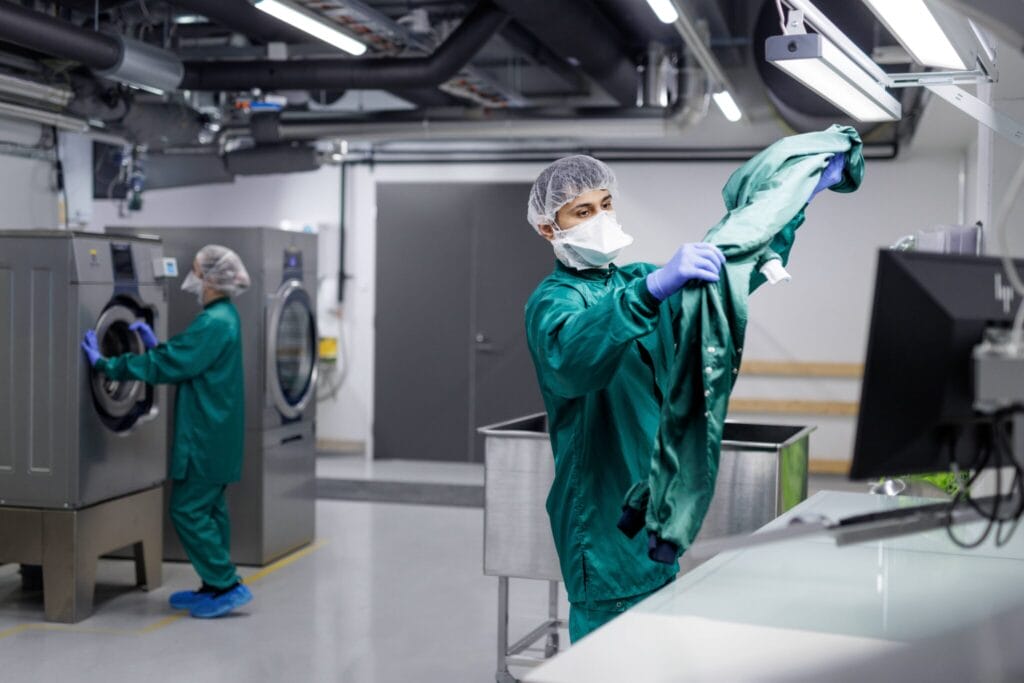
What is gowning in cleanroom environments?
Let’s start with the basics. Gowning in cleanroom environments is how people suit up before entering the cleanroom. It’s not just about looking the part, but about creating a protective barrier between you and the products inside. In highly controlled spaces like pharmaceutical manufacturing or electronics production, even a tiny speck of dust or a stray hair can lead to serious issues.
When gowning is done right, it helps keep both the cleanroom environment and its sensitive processes safe. But if it’s done poorly? Contamination risks rise, quality drops, and operations might grind to a halt. That’s why proper gowning isn’t something you can compromise on.
So, how do you gown properly?
There’s a specific order to follow, and every step counts. Here’s a simple walk-through of a typical gowning routine:
- Hair cover on first – no stray hairs allowed.
- Face mask next – this prevents droplets from entering the clean zone.
- Shoe covers – keeps outside dirt out.
- Gown up carefully – making sure it fully covers your regular clothes.
- Gloves last – hands are often the biggest risk, so they go on at the end.
Each item has its place in the routine, and the order helps reduce the chance of contamination. A moment of carelessness, like touching your face or adjusting your mask with bare hands, can undo the whole effort.
What kind of garments are used in cleanroom environments?
Cleanroom workwear is specially designed to keep particles and microbes at bay. The most common garment is the coverall, which offers full-body protection. You’ll often see these paired with hoods, boots, gloves, and masks – all made to meet strict cleanroom standards.
The materials are chosen for a reason. They’re lightweight, breathable, and resistant to static and particle release. Plus, they’re designed to be comfortable enough to wear during long shifts. No one works their best if they’re distracted by itchy fabric or awkward seams.
What makes Lindström different?
We know that managing cleanroom garments is about ensuring consistent cleanliness, compliance, and comfort.
At Lindström, we provide a full-service cleanroom solution. This means:
- Professionally tested, validated cleanroom garments
- GMP-compliant laundry processes
- Smart tracking using RFID technology
- Regular performance checks on every item
Everything is tailored to your needs, whether you’re working in ISO 5 or ISO 8 environments. And because we handle everything from laundry to lifecycle monitoring, you can focus on what you do best, that is running your operations smoothly.
Typical challenges in gowning in cleanroom environments
There are a few common hurdles:
- Inconsistent gowning practices among staff
- Limited training or forgetting the proper sequence
- Insufficient garment supply during shift changes
- Risk of cross-contamination if dirty and clean garments aren’t handled separately
All of these can lead to contamination risks or even non-compliance during audits. The good news? These are solvable problems, especially with the right partner.
How does gowning tie into regulations and compliance?
Gowning is a key pillar of cleanroom compliance. Regulatory bodies, like the EU and FDA, require strict control over what personnel wear and how those garments are cleaned and managed. EU GMP Annex 1, for example, calls for documented gowning processes, validated laundering cycles, and strict lifecycle tracking.
When your gowning process is airtight, it reduces risk and protects your product, your people, and your reputation.
One less thing to worry about
Managing gowning in-house takes time, money, and constant oversight. But when you outsource to Lindström, you get peace of mind.
- No stockroom headaches
- No surprise costs
- No gaps in supply
Just hygienically clean garments, delivered on time, every time. Fully traceable, fully compliant.




